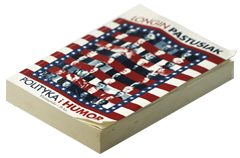Stan książek
Nasze książki są dokładnie sprawdzone i jasno określamy stan każdej z nich.






Nowa
Książka nowa.





Używany - jak nowa
Niezauważalne lub prawie niezauważalne ślady używania. Książkę ciężko odróżnić od nowej pozycji.





Używany - dobry
Normalne ślady używania wynikające z kartkowania podczas czytania, brak większych uszkodzeń lub zagięć.





Używany - widoczne ślady użytkowania
zagięte rogi, przyniszczona okładka, książka posiada wszystkie strony.
The House of Vasa and The House of Austria...Vol.1
Masz tę lub inne książki?
Sprzedaj je u nas
The 16th and 17th centuries saw the House of Austria and the House of Vasa extending their influence over much of Europe. Each dynasty was split into two branches: the Habsburgs maintained courts in Vienna and Madrid, while the Vasas held power through their courts in Stockholm and Cracow/Warsaw. The House of Austria's rule spanned not just the Empire and the Iberian kingdoms, but also included the Kingdom of Hungary, the Kingdom of Bohemia, the Netherlands, vast regions of Northern Italy, and the Kingdom of Naples. The House of Vasa, on the other hand, governed the Intermarum, a sizeable area in Central Europe ranging from the Baltic Sea to the Black Sea. Their territories included Sweden, Finland, Estonia, and the Kingdom of Poland alongside the Great Duchy of Lithuania.
During this era, both houses leaned on the legacy of the Empire of Charles V and a shared commitment to Catholicism, which fostered a sense of dynastic loyalty especially prominent during the Thirty Years' War (1618-1648). Despite losing the Spanish throne after the War of Succession, the Habsburgs continued their rule in Vienna until World War I. The trajectory of the House of Vasa diverged significantly, with Sigismund III—a grandson of the dynasty's founder, Gustav I, and a Jagiellonian on his mother's side—being elected as King of Poland and Grand Duke of Lithuania in 1587. Sigismund III also claimed the Swedish crown in 1592 after the death of his father, John III, only to lose it to his uncle, Charles, Duke of Södermanland, seven years later. This division led to ongoing conflict between the Swedish and Polish branches, aligning them with opposing political and religious alliances. In Sweden, succession was hereditary, whereas in Cracow, it depended on the choice of the Polish-Lithuanian nobility, who elected their rulers. The era of Vasa rule concluded with the abdications of the last family members: Christina in 1654 and John Casimir in 1668.
Wybierz stan zużycia:
WIĘCEJ O SKALI
The 16th and 17th centuries saw the House of Austria and the House of Vasa extending their influence over much of Europe. Each dynasty was split into two branches: the Habsburgs maintained courts in Vienna and Madrid, while the Vasas held power through their courts in Stockholm and Cracow/Warsaw. The House of Austria's rule spanned not just the Empire and the Iberian kingdoms, but also included the Kingdom of Hungary, the Kingdom of Bohemia, the Netherlands, vast regions of Northern Italy, and the Kingdom of Naples. The House of Vasa, on the other hand, governed the Intermarum, a sizeable area in Central Europe ranging from the Baltic Sea to the Black Sea. Their territories included Sweden, Finland, Estonia, and the Kingdom of Poland alongside the Great Duchy of Lithuania.
During this era, both houses leaned on the legacy of the Empire of Charles V and a shared commitment to Catholicism, which fostered a sense of dynastic loyalty especially prominent during the Thirty Years' War (1618-1648). Despite losing the Spanish throne after the War of Succession, the Habsburgs continued their rule in Vienna until World War I. The trajectory of the House of Vasa diverged significantly, with Sigismund III—a grandson of the dynasty's founder, Gustav I, and a Jagiellonian on his mother's side—being elected as King of Poland and Grand Duke of Lithuania in 1587. Sigismund III also claimed the Swedish crown in 1592 after the death of his father, John III, only to lose it to his uncle, Charles, Duke of Södermanland, seven years later. This division led to ongoing conflict between the Swedish and Polish branches, aligning them with opposing political and religious alliances. In Sweden, succession was hereditary, whereas in Cracow, it depended on the choice of the Polish-Lithuanian nobility, who elected their rulers. The era of Vasa rule concluded with the abdications of the last family members: Christina in 1654 and John Casimir in 1668.














